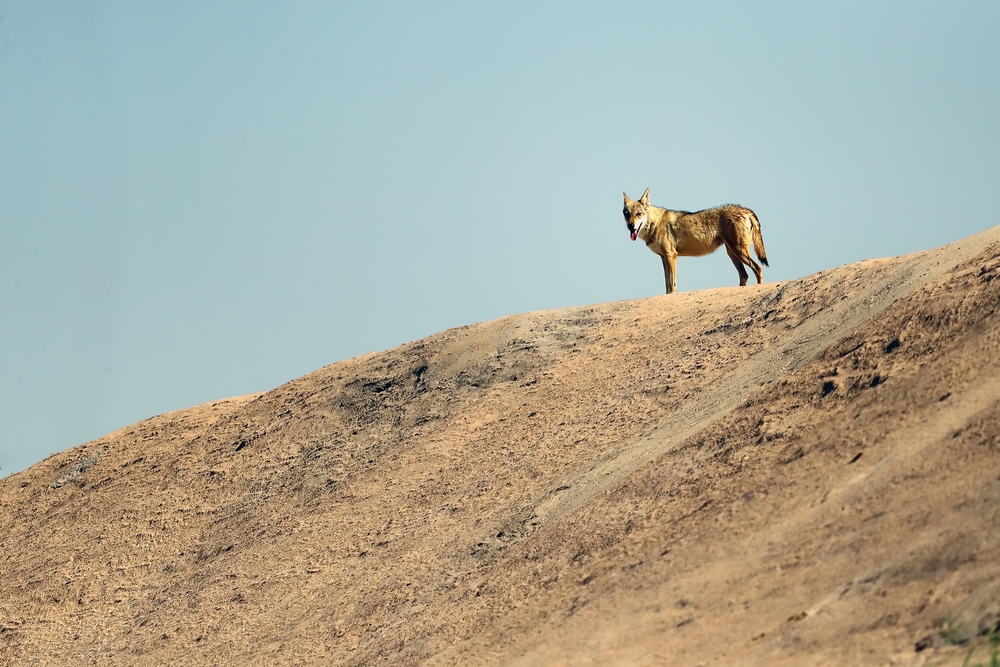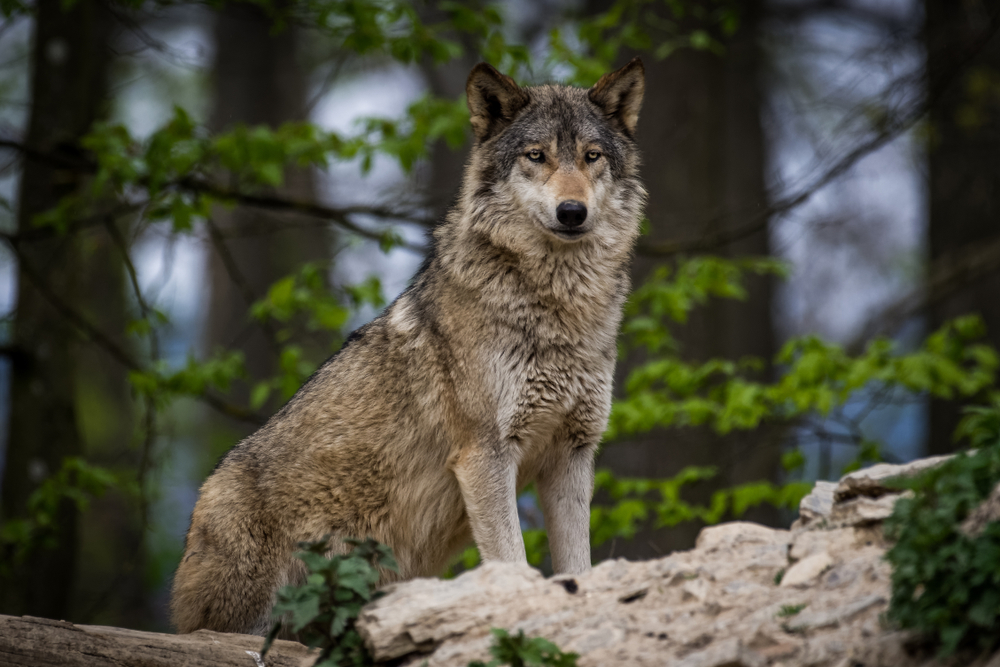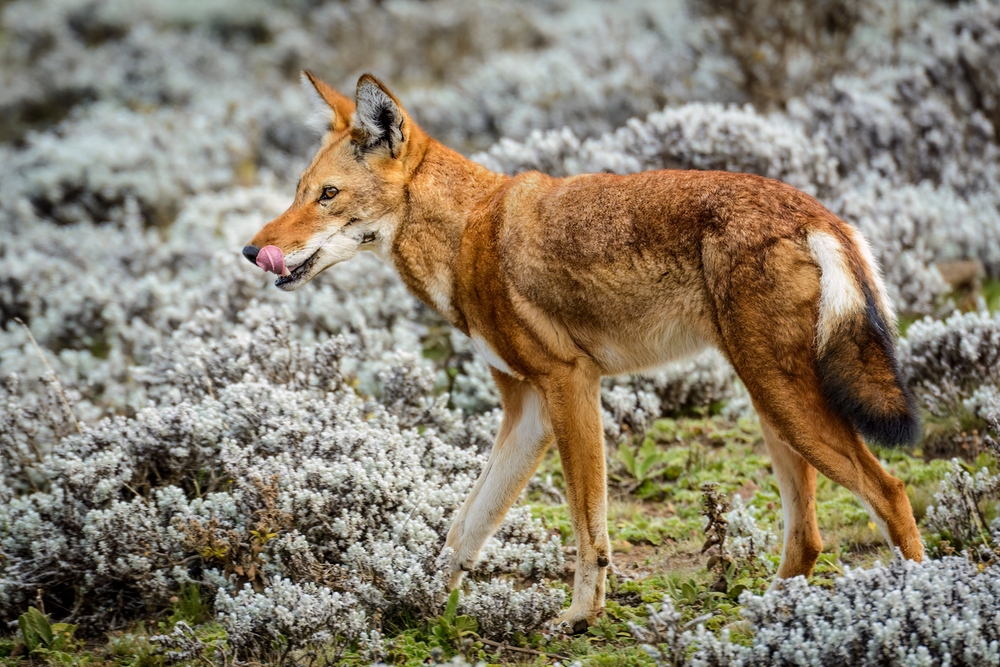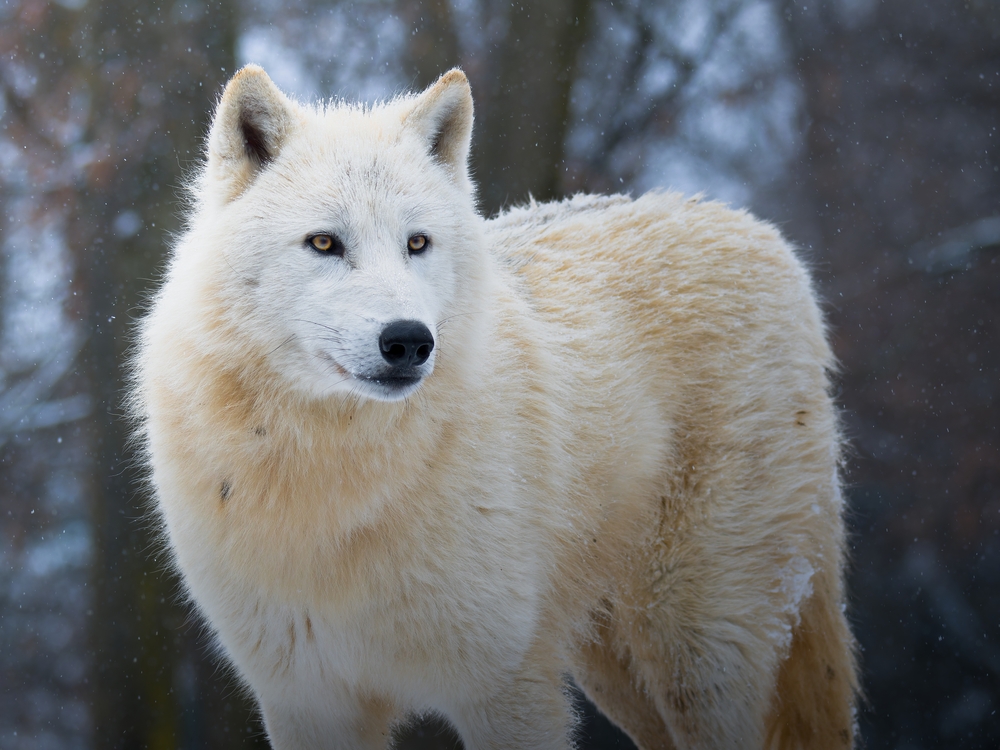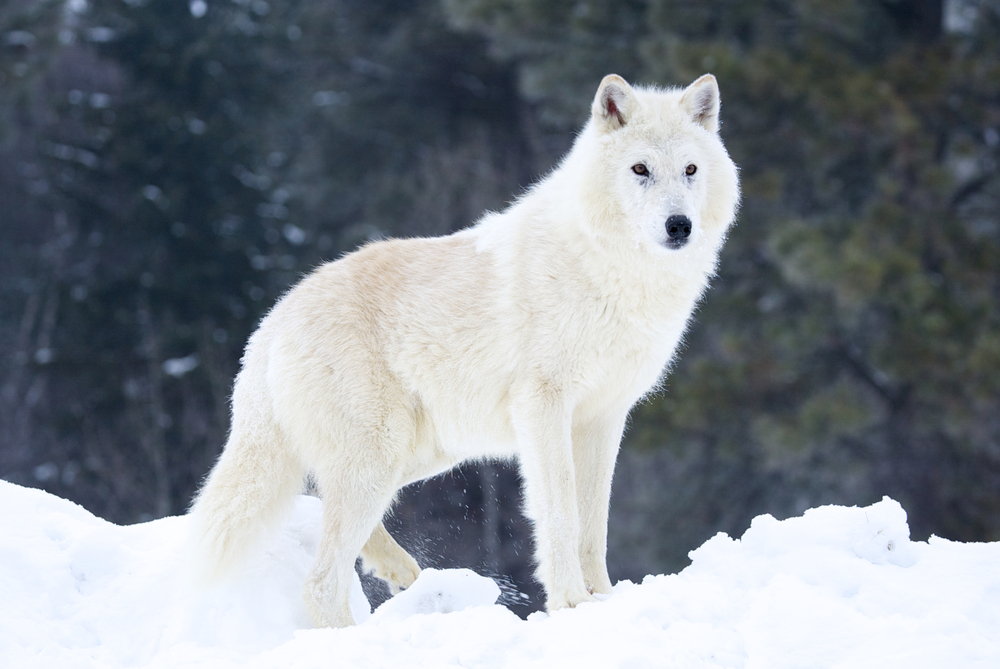About
#Carnivores
#Mammals
The Arabian wolf (Canis lupus arabs) is a small, desert-adapted subspecies of the gray wolf that inhabits the arid and semi-arid regions of the Arabian Peninsula. Belonging to the Canidae family, this wolf is found across parts of Saudi Arabia, Oman, Yemen, the United Arab Emirates, Jordan, and southern Israel. It is one of the smallest gray wolf subspecies, well-suited to the intense heat and scarcity of water in its desert environment.
Weighing between 18–25 kilograms (40–55 pounds), the Arabian wolf has a slender build, large ears for heat dissipation, and short, thin fur that ranges from gray to sandy brown. Its paws are often splayed and slightly furred to help navigate rocky or sandy terrain. Unlike many other wolves, Arabian wolves are known to hunt alone or in pairs rather than in large packs, a reflection of limited food availability in their ecosystem.
Their diet is opportunistic, including small mammals, birds, reptiles, carrion, and even garbage when living near human settlements. Arabian wolves are highly elusive and mostly nocturnal, which helps them avoid the extreme daytime temperatures of the desert.
While not officially endangered, the Arabian wolf faces growing threats from habitat fragmentation, persecution by farmers, and road mortality. In some regions, they are legally protected, while in others, they are still trapped or poisoned. Conservationists advocate for coexistence strategies and habitat preservation to ensure their long-term survival.
Despite their elusive nature, the Arabian wolf is a symbol of resilience—surviving in one of the world’s most unforgiving environments with remarkable adaptations that distinguish it from other wolf subspecies.
Threatened:
Extinct
Critically Endangered
Endangered
Vulnerable
Near Threatened
Least Concern



































































